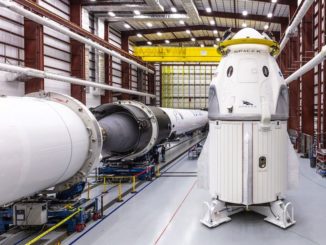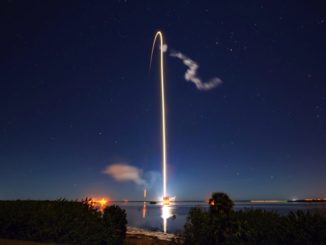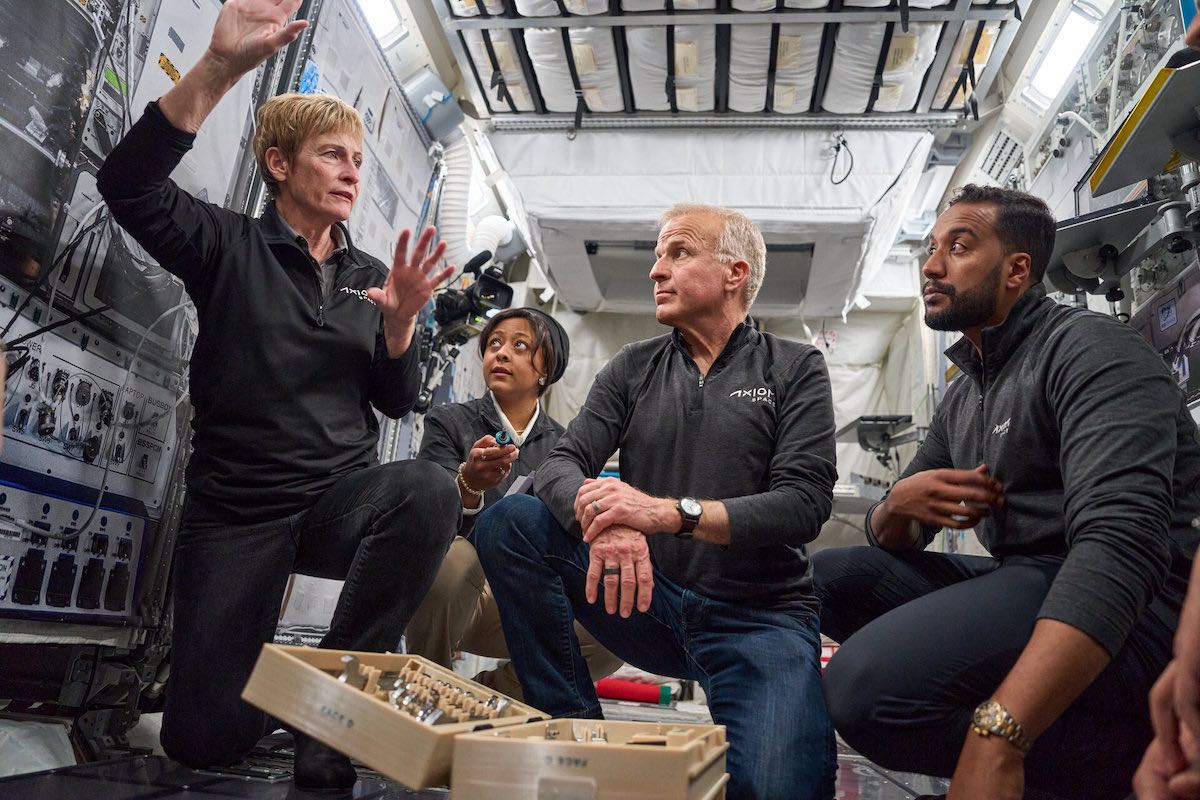
The second fully commercial astronaut flight to the International Space Station will have just two opportunities to launch Sunday and Monday, or else wait until after an upcoming SpaceX resupply mission next month to deliver a new set of high-priority solar arrays to the complex.
The private crew mission, managed by Houston-based Axiom Space, is set for liftoff at 5:37 p.m. EDT (2137 UTC) Sunday from Launch Complex 39A at NASA’s Kennedy Space Center in Florida. The four-person crew will ride into orbit aboard a SpaceX Falcon 9 rocket and Dragon spacecraft.
Record-breaking astronaut Peggy Whitson, with more time in space than any other American, leads the crew. She retired from NASA’s astronaut corps in 2018 after three long-duration missions on the space station, totaling 665 days in orbit.
She will be joined by U.S. businessman John Shoffner, who paid for his seat on the Axiom-sponsored flight to the space station. Saudi Arabian astronauts Ali Alqarni and Rayyanah Barnawi will fly as mission specialists on the Ax-2 mission, which is expected to last 10 days.
Alqarni and Barnawi will be the first Saudi Arabians to fly to the International Space Station, and Barnawi will be the first Arab woman on the orbiting research outpost. Their mission is funded by the government of Saudi Arabia.
During their time in orbit, Whitson, Shoffner, Alqarni, and Barnawi will perform biomedical experiments, chemistry and materials science research, and educational events with students on the ground. They will also greet and spend time with the seven crew members living on the station for long-duration stays.
The Ax-2 mission is Axiom’s second crew mission, following the company’s Ax-1 flight in April 2022 that made history as the first fully private astronaut crew to reach the space station. NASA is making resources on the space station available for commercial astronaut missions like Axiom’s flights, but Axiom, and ultimately the private crew members or their sponsors, must pay NASA for training and crew accommodations, such as access to the station’s life support system, food, and toilet.
The cost per seat has not been released, but NASA’s inspector general has estimated the price of a seat on a SpaceX Dragon spacecraft at about $55 million for NASA astronauts. It’s unknown how that might compare to a fully commercial seat price.
So far, NASA has required private astronaut missions to the station be commanded by a former professional astronaut. Retired NASA astronaut Michael López-Alegría commanded the Ax-1 mission last year.
Whitson said one of her roles is to guide her three crewmates, all spaceflight rookies, on the dos and don’ts of living and working on the space station.
“I have shared a long long list of what we’re going to do, what we’re not going to do, how we’re going to do things, and the whys behind all of those,” she said. “There are so many lessons learned after being up in space for 665 days, I’ve got one or two lessons I’ve maybe learned the hard way, and I’m trying to save them some time because our mission is relatively short. So we want to make sure we get the most out of every one of those days.”
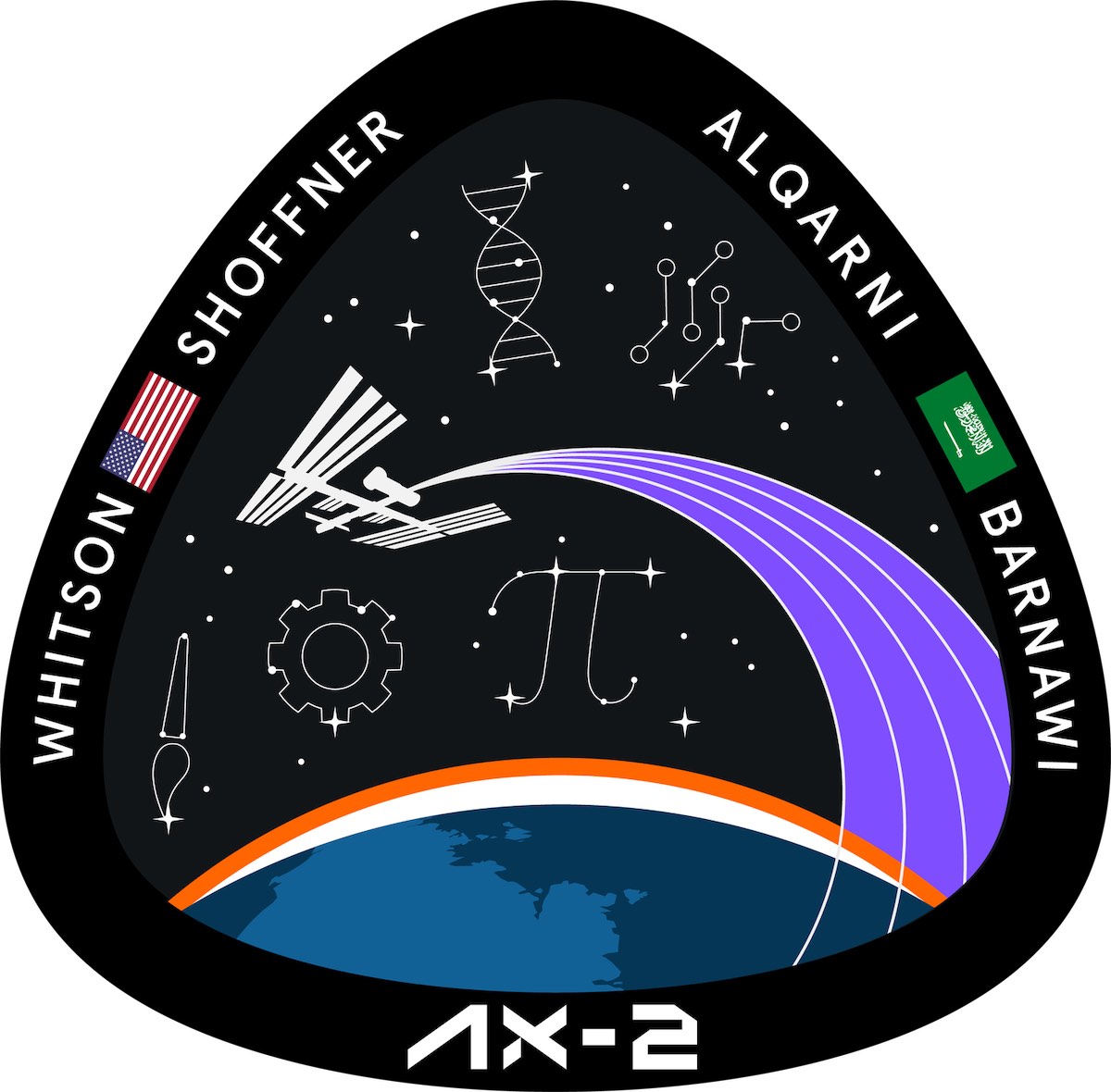
Previous visits by private astronauts, or “space tourists,” to the space station occurred on government-led missions on Russian Soyuz spaceships. Before Ax-1, 11 people had traveled to the space station as paying passengers on Soyuz missions, but they all flew with a government-employed cosmonaut commander.
Axiom contracted with SpaceX for the Falcon 9 launch and the Dragon flight to the space station. Axiom plans a third private astronaut mission to the space station late this year, also launching on a SpaceX rocket.
NASA has an agreement with Axiom to build and launch a commercially-owned module to the International Space Station as soon as late 2025. Eventually, Axiom plans to construct a standalone private space station in low Earth orbit. NASA wants a commercial orbital outpost to be ready to take over the type of research performed on the International Space Station by the time it is retired in 2030.
SpaceX rolled the Falcon 9 rocket with the Dragon Freedom crew capsule to Launch Complex 39A on Thursday, then raised it vertical for a test-firing of its main engines Friday, leading up to the countdown and launch Sunday.
But the target launch date for the Ax-2 mission was delayed from earlier this month in a ripple effect from schedule slips on a previous SpaceX mission. A Falcon Heavy rocket that was supposed to take off in early April from the same launch pad did not lift off until April 30 after a series of delays caused by technical problems and bad weather. It takes SpaceX about three weeks to reconfigure the launch pad from a Falcon Heavy mission to a crew flight on a Falcon 9 rocket.
That delayed the Ax-2 launch until Sunday, May 21. SpaceX’s next unpiloted cargo mission to the space station is scheduled for launch from the same pad June 3, and that spacecraft will link up with the complex at the same docking port to be used by the Ax-2 mission.
NASA has given Axiom and SpaceX two days, Sunday and Monday, to get the Ax-2 mission off the ground before the space agency directs SpaceX to turn their attention toward preparing for the June 3 resupply launch. NASA has a say in both missions because they are flying to the space station.
Axiom has already shortened the duration of the Ax-2 mission’s stay at the space station from 10 days to eight days to allow the flight to fit into NASA’s schedule before the SpaceX resupply mission next month. Assuming the mission lifts off Sunday, the Dragon Freedom spacecraft would dock at the station Monday, then depart May 30 to head for a parachute-assisted splashdown off the coast of Florida.
“In the end, there was no impact to the research objectives,” said Derek Hassmann, Axiom’s chief of mission integration and operations. “There was some media outreach and other things that we wanted to do, but weren’t a high priority, that were dropped. But all the high-priority objectives we were able to fit into this eight day timeline.”
The Cargo Dragon flight next month will deliver two upgraded roll-out solar arrays to the space station. The installation and deployment of the new solar panels will require one or two spacewalks by the astronauts on the station, along with the use of the lab’s Canadian-built robotic arm.
There is a period of high sun angle on the space station in early July, so NASA wants the solar array work complete by then. That will be followed by the scheduled July 21 launch of Boeing’s Starliner crew capsule on its first crewed test flight to the station. SpaceX also plans more launches of its Falcon Heavy rocket for the U.S. Space Force and a commercial customer this summer from pad 39A, and SpaceX’s next NASA-contracted crew flight is scheduled for launch from pad 39A is planned in August.
All in all, that leaves few opportunities to fit the Ax-2 mission this summer into a busy schedule of missions to the space station, and into SpaceX’s busy launch schedule from Kennedy Space Center. If the mission doesn’t fly Sunday or Monday, it’s not clear when Ax-2 will have another shot at launching.
“Right now, we’re looking at May 21 and 22,” said Joel Montalbano, NASA’s program manager for the International Space Station. “If we don’t get off by the 22nd, we’ll stand down with the Axiom-2 mission and turn our focus to the SpaceX (cargo) mission. “And then ,at that time, Axiom, NASA, and SpaceX will get together and look for the next best opportunity as we look at the missions that we have this summer, which is not only missions going to the ISS but other missions that use the pad facilities at Kennedy Space Center.”
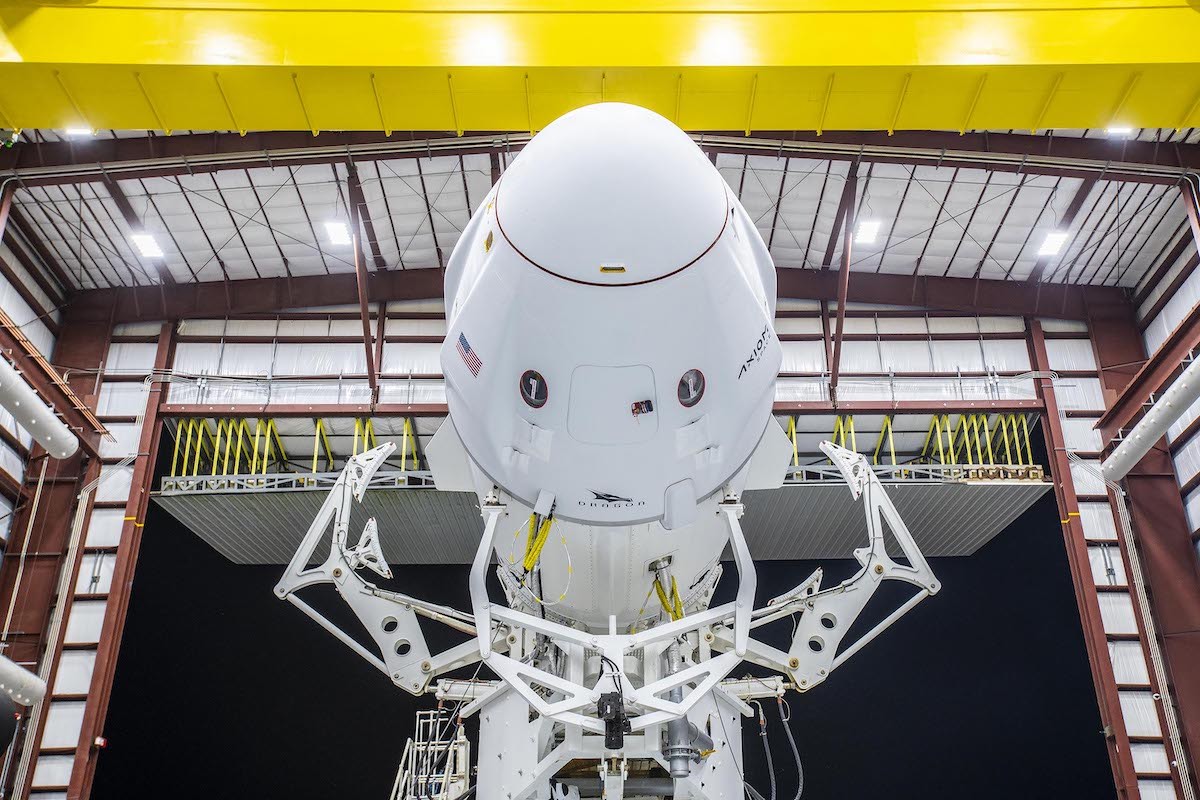
The weather forecast Sunday shows a good chance that conditions will permit the Falcon 9 to launch the Ax-2 mission. There’s a 60% chance of favorable weather for liftoff Sunday.
But the weather pattern trends wetter early in the week, with an 80% probability Monday that thunderstorms could violate one or more of the launch commit criteria for the Falcon 9 rocket and Crew Dragon spacecraft.
The Ax-2 mission will be SpaceX’s 10th human spaceflight mission, but it comes with a few firsts. The launch will debut a brand new Falcon 9 booster, tail number B1080, making its first flight to space.
For the first time on a crew launch, SpaceX will return the Falcon 9 booster back to a landing zone at Cape Canaveral Space Force Station. For all nine previous crew launches, the booster landed on a drone ship offshore, which brought the rocket back to Florida for refurbishment and reuse.
Bill Gerstenmaier, SpaceX’s vice president of build and flight reliability, said the company’s high launch rate has shown the Falcon 9 rocket has a bit of extra performance to enable the booster’s return to Florida for landing. The return maneuver requires an additional burn by the rocket’s engines, meaning it needs a bit more residual propellant in the tanks after the booster completes its main task of sending the Dragon crew capsule toward space.
SpaceX has squeezed better performance out of the Falcon 9 rocket on Starlink missions without significant modifications to the engines or other hardware.
“We’ve been able, on Starlink missions, to show that we have extra capability for us to go ahead and utilize for this mission,” Gerstenmaier said. “We’ve always had this kind of capability before, we just weren’t sure that we would always get the performance, but the number of Falcon flights we’ve flown have allowed us to say that that performance is available and can be used where its needed to be used moving forward.”
Gerstenmaier said it’s “advantageous” for SpaceX to return the rocket to land, rather than guiding it to the drone ship in the Atlantic Ocean. It eliminates the need to worry about weather or sea conditions at the drone ship location, and frees up the recovery vessels for other missions.
“This is nice in the fact that this a new booster, a first flight booster, that we’re going to fly here, Booster 1080,” Gerstenmaier said. “It’ll be good to see it into service, and we expect it to have a long lifetime and serve multiple missions in the future.”
Email the author.
Follow Stephen Clark on Twitter: @StephenClark1.

